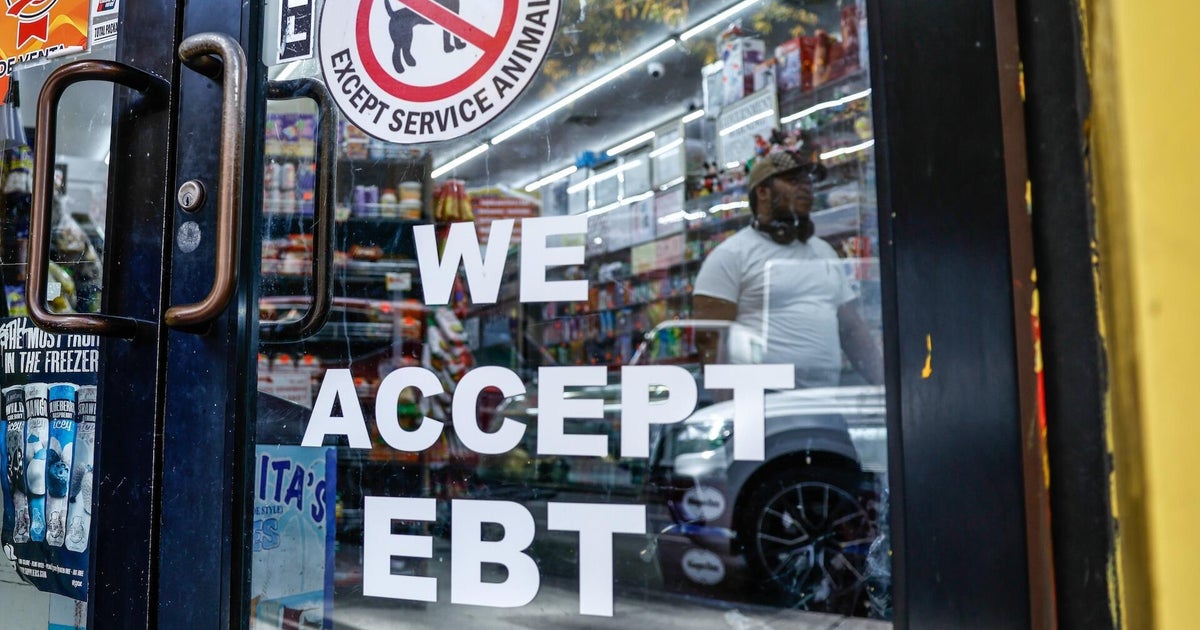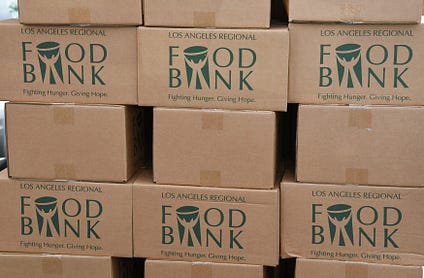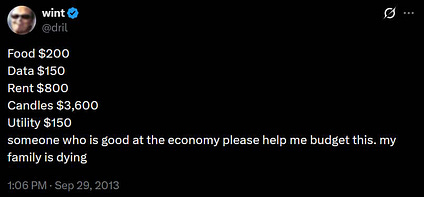Low-income families face a financial cliff as government shutdown threatens 4 federal aid programs – CBS News

Report on the Impact of Federal Funding Disruptions on Sustainable Development Goals in the United States
Executive Summary
A potential cessation of federal funding for four critical social assistance programs threatens to create significant setbacks for the United States in achieving several key Sustainable Development Goals (SDGs). The disruption, stemming from a government shutdown, directly impacts programs designed to support low-income families. This report analyzes the potential consequences of these funding cuts through the lens of the SDGs, highlighting the risks to progress on poverty, hunger, health, education, energy access, and inequality.
Affected Programs and Alignment with Sustainable Development Goals
The impending funding halt on November 1 will affect multiple programs, each crucial for advancing specific SDGs:
- Supplemental Nutrition Assistance Program (SNAP): Directly supports SDG 1 (No Poverty) and SDG 2 (Zero Hunger) by providing food purchasing assistance to 42 million Americans.
- Women, Infants, and Children (WIC) Program: Advances SDG 2 (Zero Hunger) and SDG 3 (Good Health and Well-being) by ensuring nutritional support for nearly 7 million pregnant women, new mothers, and young children.
- Head Start: Contributes to SDG 4 (Quality Education) and SDG 10 (Reduced Inequalities) by offering early childhood education and development services to approximately 750,000 children from low-income families.
- Low Income Home Energy Assistance Program (LIHEAP): Addresses SDG 1 (No Poverty), SDG 3 (Good Health and Well-being), and SDG 7 (Affordable and Clean Energy) by helping 6 million households manage energy costs.
Analysis of Setbacks to Sustainable Development Goals
The suspension of these programs will have cascading negative effects on the nation’s most vulnerable populations, directly undermining progress toward the following SDGs:
- SDG 1: No Poverty & SDG 2: Zero Hunger
The termination of SNAP and WIC payments places millions of households at immediate risk of food insecurity, a direct contradiction to the goals of eradicating poverty and hunger. The average SNAP benefit of $187 per month is a critical lifeline. Reports indicate that charitable organizations such as food banks do not possess the capacity to compensate for a systemic failure of this magnitude, leaving families to make impossible choices between food and other essential expenses.
- SDG 3: Good Health & Well-being & SDG 4: Quality Education
The loss of WIC funding jeopardizes the health of mothers and young children by cutting off access to nutritious foods and formula. Furthermore, hunger and nutritional deficiencies are known to impede a child’s cognitive development and ability to learn. The shutdown of 140 Head Start programs, affecting 65,000 children, represents a direct blow to SDG 4 by denying access to quality early education, which is foundational for future opportunities and reducing intergenerational poverty. The immense stress placed on parents forced to navigate these losses also poses a significant threat to family well-being (SDG 3).
- SDG 7: Affordable and Clean Energy & SDG 10: Reduced Inequalities
A delay in LIHEAP funding coincides with a projected 8% rise in home heating costs, threatening the goal of ensuring affordable energy for all. This “perfect storm” could lead to utility shutoffs, exposing families to unsafe living conditions. Cumulatively, the suspension of these four programs disproportionately harms low-income households, single-parent families, and children, thereby exacerbating existing disparities and actively working against the target of SDG 10 to reduce inequalities within the country.
Conclusion
The interruption of funding for SNAP, WIC, Head Start, and LIHEAP constitutes a significant policy failure with direct and severe consequences for the nation’s progress on the Sustainable Development Goals. The potential for long-term damage to the health, education, and financial stability of millions of Americans underscores the critical importance of consistent social safety nets in achieving a sustainable and equitable future. The failure to maintain these programs risks reversing progress and deepening societal inequalities.
Analysis of Sustainable Development Goals in the Article
1. Which SDGs are addressed or connected to the issues highlighted in the article?
-
SDG 1: No Poverty
The article focuses on the financial struggles of low-income families who are on the brink of a “financial cliff” due to the government shutdown. The loss of assistance for food, energy, and education directly exacerbates poverty.
-
SDG 2: Zero Hunger
The core issue discussed is the potential halt of funding for the Supplemental Nutrition Assistance Program (SNAP) and the Women, Infants and Children (WIC) program. These “anti-hunger programs” are critical for providing food to millions, and their disruption leads directly to food insecurity and hunger.
-
SDG 4: Quality Education
The article highlights the threat to Head Start programs, which provide preschool education to low-income children. The loss of federal funding could disrupt early childhood education for thousands of families, impacting children’s development and learning.
-
SDG 7: Affordable and Clean Energy
The potential funding shortage for the Low Income Home Energy Assistance Program (LIHEAP) is discussed. This program helps low-income households afford their energy bills, and its disruption could lead to utility shutoffs, especially during a time of rising energy prices.
-
SDG 10: Reduced Inequalities
The article exclusively discusses programs designed to support the most vulnerable and low-income segments of the population. The shutdown disproportionately affects these groups, thereby widening the inequality gap by removing essential social safety nets.
2. What specific targets under those SDGs can be identified based on the article’s content?
-
SDG 1: No Poverty
- Target 1.3: Implement nationally appropriate social protection systems and measures for all, including floors, and by 2030 achieve substantial coverage of the poor and the vulnerable.
Explanation: The article is centered on the disruption of key social protection systems in the U.S. (SNAP, WIC, LIHEAP, Head Start) that provide a safety net for millions of low-income and vulnerable Americans. The government shutdown directly threatens the implementation and coverage of these systems.
- Target 1.3: Implement nationally appropriate social protection systems and measures for all, including floors, and by 2030 achieve substantial coverage of the poor and the vulnerable.
-
SDG 2: Zero Hunger
- Target 2.1: By 2030, end hunger and ensure access by all people, in particular the poor and people in vulnerable situations, including infants, to safe, nutritious and sufficient food all year round.
Explanation: The potential halt of SNAP and WIC payments directly threatens food access for 42 million and 7 million people, respectively. The article quotes individuals expressing fear about how they will “afford groceries” and “make sure my kids are fed,” which aligns perfectly with this target. - Target 2.2: By 2030, end all forms of malnutrition… and address the nutritional needs of… pregnant and lactating women…
Explanation: The WIC program is specifically mentioned as providing “formula and nutritious foods for pregnant women and young children.” The disruption of this program directly impacts the nutritional needs of these specific vulnerable groups, which is the focus of Target 2.2.
- Target 2.1: By 2030, end hunger and ensure access by all people, in particular the poor and people in vulnerable situations, including infants, to safe, nutritious and sufficient food all year round.
-
SDG 4: Quality Education
- Target 4.2: By 2030, ensure that all girls and boys have access to quality early childhood development, care and pre-primary education so that they are ready for primary education.
Explanation: The article states that the shutdown will cause Head Start programs to lose federal funding, “potentially disrupting preschool for thousands of families.” This directly relates to providing access to pre-primary education for children from low-income backgrounds.
- Target 4.2: By 2030, ensure that all girls and boys have access to quality early childhood development, care and pre-primary education so that they are ready for primary education.
-
SDG 7: Affordable and Clean Energy
- Target 7.1: By 2030, ensure universal access to affordable, reliable and modern energy services.
Explanation: The article discusses the threat to the LIHEAP program, which helps “6 million low-income households pay their energy bills.” The delay in funding could leave families facing “power shutoffs,” directly impacting their access to affordable and reliable energy.
- Target 7.1: By 2030, ensure universal access to affordable, reliable and modern energy services.
-
SDG 10: Reduced Inequalities
- Target 10.2: By 2030, empower and promote the social, economic and political inclusion of all, irrespective of… economic or other status.
Explanation: The programs discussed (SNAP, WIC, LIHEAP, Head Start) are fundamental tools for the social and economic inclusion of low-income households. By removing this support, the shutdown actively works against this target, increasing the economic vulnerability of these groups and exacerbating inequality.
- Target 10.2: By 2030, empower and promote the social, economic and political inclusion of all, irrespective of… economic or other status.
3. Are there any indicators mentioned or implied in the article that can be used to measure progress towards the identified targets?
-
For SDG 1, Target 1.3
- Indicator (Implied): Proportion of the population covered by social protection systems.
Explanation: The article provides specific numbers for the coverage of each program: “42 million Americans” on SNAP, “nearly 7 million” on WIC, “65,000 low-income children” in affected Head Start programs, and “about 6 million low-income households” helped by LIHEAP. These figures serve as direct measures of the population covered by these social safety nets.
- Indicator (Implied): Proportion of the population covered by social protection systems.
-
For SDG 2, Target 2.1
- Indicator (Implied): Prevalence of food insecurity.
Explanation: The article describes the consequences of the funding halt in terms of food insecurity, quoting a mother who is “wondering how I’m going to be able to afford everything” and another who says, “I’ll go without to make sure my kids are fed.” These statements are qualitative measures of food insecurity.
- Indicator (Implied): Prevalence of food insecurity.
-
For SDG 4, Target 4.2
- Indicator (Mentioned): Participation rate in organized learning (one year before the official primary entry age).
Explanation: The article explicitly states that the shutdown affects “roughly 65,000 children” in Head Start programs, which provide pre-primary education. This number is a direct indicator of participation that is at risk.
- Indicator (Mentioned): Participation rate in organized learning (one year before the official primary entry age).
-
For SDG 7, Target 7.1
- Indicator (Implied): Proportion of population with access to electricity.
Explanation: The article warns that the delay in LIHEAP funding could lead to “power shutoffs.” The number of households experiencing such shutoffs would be a direct indicator of a lack of reliable access to energy.
- Indicator (Implied): Proportion of population with access to electricity.
4. Create a table with three columns titled ‘SDGs, Targets and Indicators” to present the findings from analyzing the article.
| SDGs | Targets | Indicators |
|---|---|---|
| SDG 1: No Poverty | 1.3: Implement nationally appropriate social protection systems. | Number of beneficiaries of social protection programs (e.g., 42 million on SNAP, 6 million households on LIHEAP). |
| SDG 2: Zero Hunger | 2.1: End hunger and ensure access to food for all, especially the vulnerable.
2.2: End all forms of malnutrition, especially for pregnant women and children. |
Number of people receiving food assistance (42 million on SNAP, 7 million on WIC).
Prevalence of food insecurity (implied by families worrying about affording groceries and going without meals). |
| SDG 4: Quality Education | 4.2: Ensure access to quality early childhood development and pre-primary education. | Number of children at risk of losing access to pre-primary education (65,000 children in Head Start). |
| SDG 7: Affordable and Clean Energy | 7.1: Ensure universal access to affordable and reliable energy services. | Number of households at risk of power shutoffs due to lack of energy assistance (6 million households served by LIHEAP). |
| SDG 10: Reduced Inequalities | 10.2: Empower and promote the social and economic inclusion of all. | Disruption of programs specifically targeting low-income and vulnerable populations, indicating a setback in their economic inclusion. |
Source: cbsnews.com
What is Your Reaction?
 Like
0
Like
0
 Dislike
0
Dislike
0
 Love
0
Love
0
 Funny
0
Funny
0
 Angry
0
Angry
0
 Sad
0
Sad
0
 Wow
0
Wow
0




















































.jpg.webp?itok=0ZsAnae9#)


























